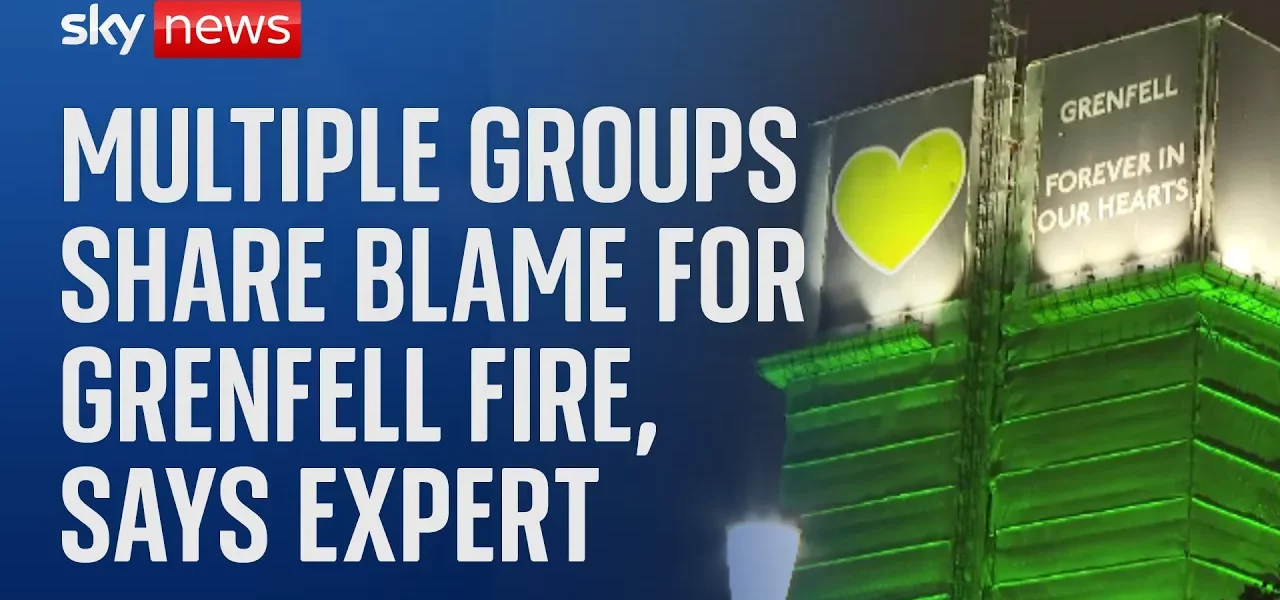Criticism of the Construction Industry Post-Grenfell Tower Fire

This article provides a comprehensive overview of the criticisms directed at various stakeholders in the construction industry following the Grenfell Tower fire. We’ll delve into the roles of government officials, product manufacturers, and the construction design team, exploring the broader implications of their actions on building safety regulations.
Introduction
The Grenfell Tower fire in 2017 was a devastating tragedy that claimed many lives and raised critical questions about building safety standards in the UK. In the aftermath, a report surfaced that placed blame on several groups, including government officials, construction firms, and product manufacturers. This article aims to dissect the findings of the report, the culture within the construction industry, and the implications for future regulations.
Key Stakeholders in the Grenfell Tower Report
The report highlighted three main groups that share responsibility for the failings that led to the Grenfell Tower fire:
- Government Officials: They were responsible for setting the building regulations and safety standards in the years leading up to the tragedy.
- Product Manufacturers: The companies that produced the materials used in the tower’s cladding system.
- Construction and Design Teams: The professionals who oversaw the refurbishment of Grenfell Tower.
Each of these groups has been criticized for their role in this disaster, and it’s essential to understand the nuances of their responsibilities.
The Role of Government in Building Safety
Government officials played a crucial role in creating the regulatory framework that governs building safety. In the years leading up to the Grenfell fire, there was a significant push towards deregulation under the coalition government led by David Cameron. This shift had profound implications for building safety, including:
- Implementing a “one in, one out” policy for regulations, making it difficult to introduce new safety measures.
- Delaying necessary amendments to building regulations, which were highlighted after previous fires like the Lakanal House fire in 2009.
- Creating an environment where construction firms operated without clear guidance on safety standards.
This regulatory landscape contributed to a culture where safety was compromised, leading to the conditions that allowed the Grenfell disaster to occur.
Product Manufacturers and Their Accountability
Product manufacturers also bear significant responsibility for the Grenfell fire. The inquiry revealed a troubling trend where some manufacturers knowingly marketed unsafe products. Key points include:
- Manufacturers conducted fire tests that demonstrated their products were unsafe for high-rise buildings.
- Some companies, such as Celotex and Arconic, were found to have rigged test results to make their products appear safer than they were.
- Despite previous recommendations for safety improvements, manufacturers continued to sell dangerous cladding materials, prioritizing profit over safety.
This deliberate misleading of the market raises ethical questions about accountability in the construction industry.
The Culture of the Construction Industry
The broader culture within the construction industry also came under scrutiny. The report suggested that a culture of cost-cutting and negligence contributed to the Grenfell tragedy. This culture manifested in several ways:
- Clients often chose cheaper materials, compromising safety for cost-effectiveness.
- The construction industry prioritized profit margins over adherence to safety standards.
- There was a lack of transparency and a reluctance to address safety concerns among stakeholders.
Addressing this culture is essential for preventing future tragedies and improving overall safety in the construction sector.
Looking Forward: The Need for New Regulations
In the wake of the Grenfell Tower fire, the construction industry faces the challenge of adapting to new regulations aimed at improving safety standards. Industry reactions have varied, with some expressing concerns about the potential costs associated with stricter regulations. Key considerations include:
- Increased costs may arise from hiring additional consultants and implementing new safety measures.
- There is a need for a balance between regulation and the practicalities of construction, ensuring that safety does not come at an unsustainable cost.
- The industry largely welcomes the need for regulatory clarity, which can help restore trust and improve safety practices.
While the fear of increased costs exists, many agree that the benefits of enhanced safety far outweigh potential financial burdens.
Conclusion
The Grenfell Tower fire served as a wake-up call for the construction industry and regulatory bodies alike. The report’s findings highlight the shared responsibility among government officials, product manufacturers, and construction teams. Moving forward, it is imperative that the industry embraces a culture of safety and transparency to prevent future tragedies. We encourage stakeholders to engage with the findings of the report thoroughly and consider the necessary changes to ensure that safety is prioritized above all else.
For more insights into building safety regulations and the construction industry, explore our related articles on building safety regulations and the culture of the construction industry.
“`




